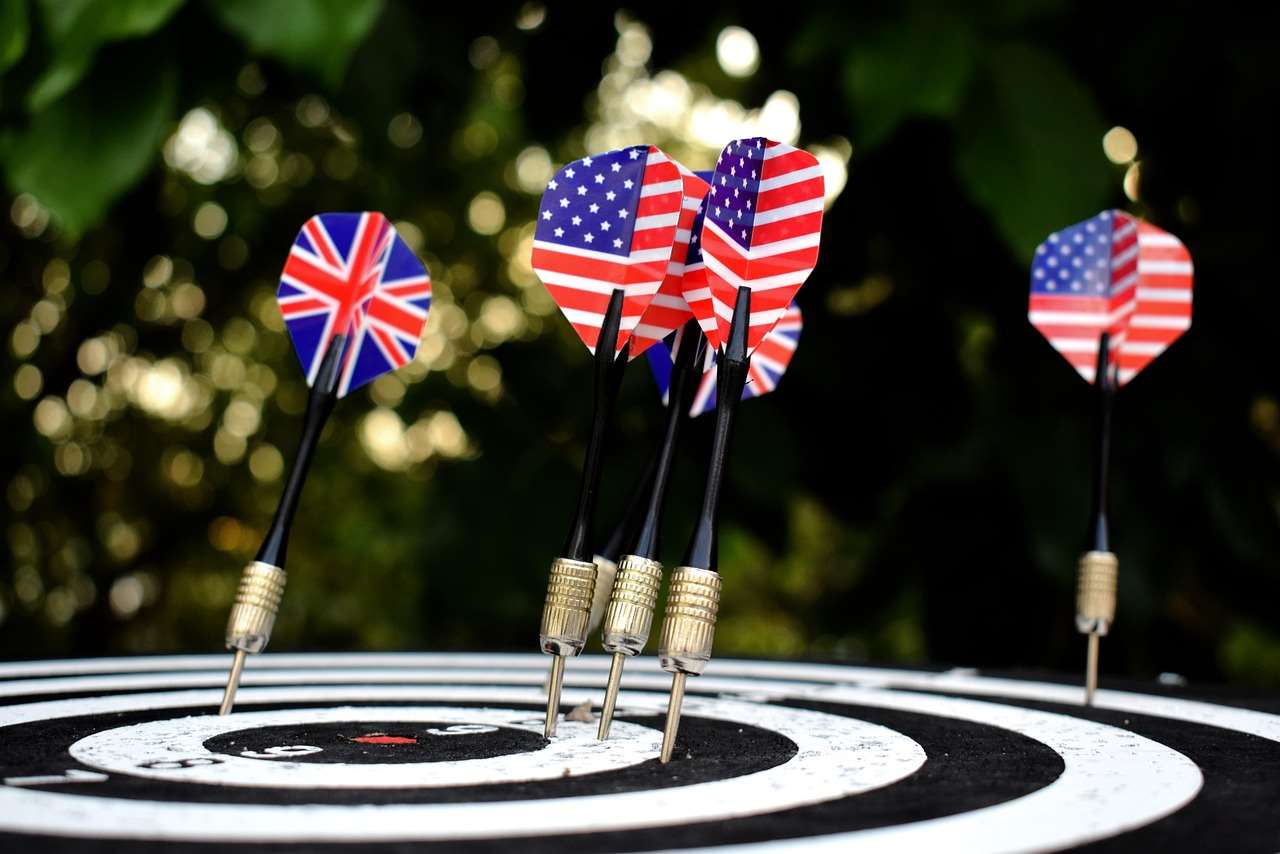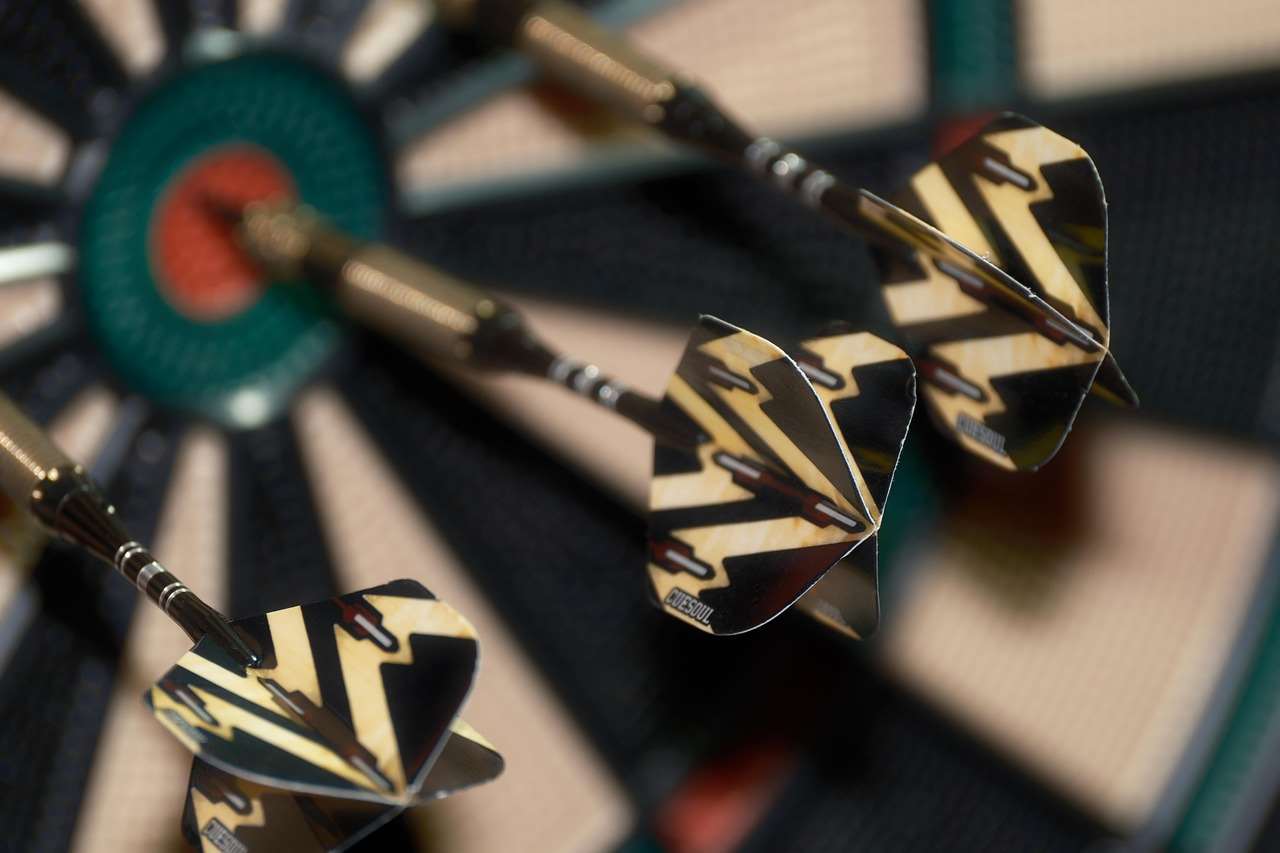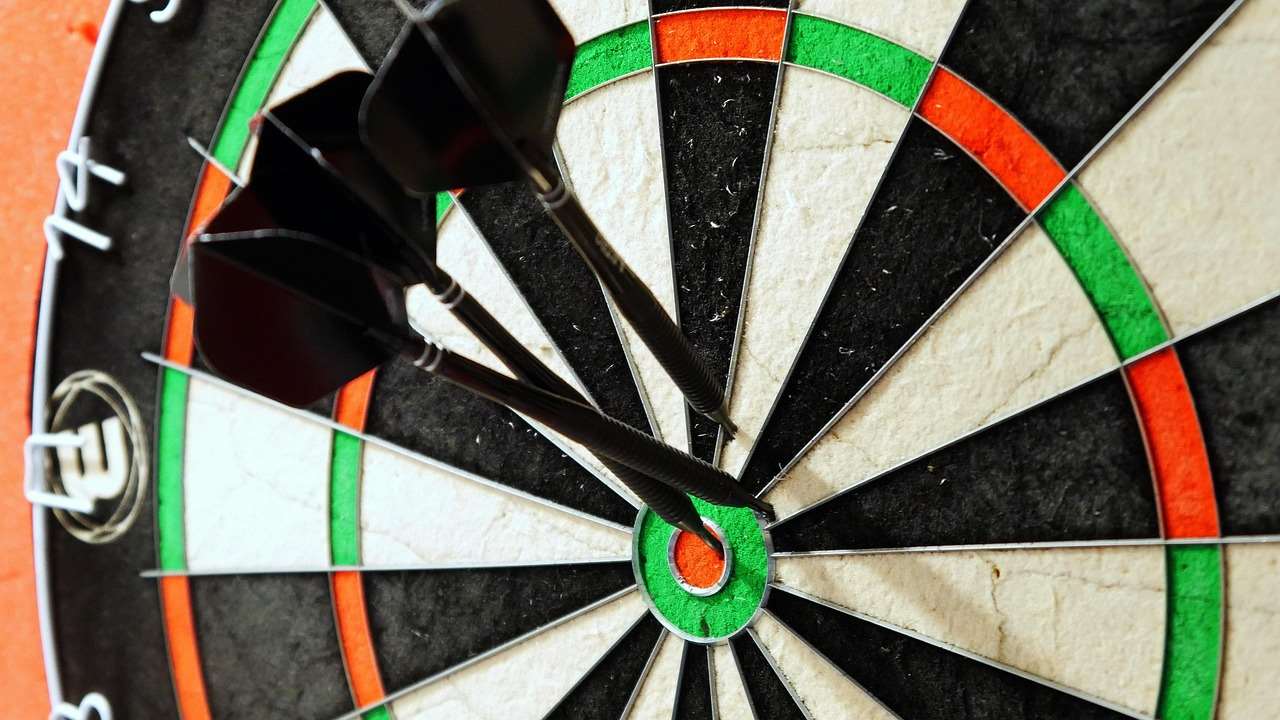Many aspiring dart players wonder what darts the pros use, hoping that the right equipment will elevate their game. While skill and practice are paramount, professional dart players meticulously choose their darts based on weight, grip, material, and balance. This article will delve into the dart preferences of some of the world’s top players and explore the factors that influence these choices, helping you understand how to select darts that suit your own playing style.
⚠️ Still Using Pen & Paper (or a Chalkboard)?! ⚠️
Step into the future! The Dart Counter App handles all the scoring, suggests checkouts, and tracks your stats automatically. It's easier than you think!
Try the Smart Dart Counter App FREE!Ready for an upgrade? Click above!
Understanding What Darts the Pros Use: Core Considerations
When examining what darts the pros use, several key elements consistently emerge as critical decision-making factors. These aren’t arbitrary choices; they’re carefully considered aspects that contribute to performance and consistency. Let’s explore these in detail.

Weight
Dart weight is a fundamental attribute. Most professional players use darts weighing between 21 and 26 grams. While heavier darts can provide more stability in the air, they can also lead to fatigue over long matches. Lighter darts are easier to throw with speed, but may be more susceptible to deflection. Experimenting within this range is crucial to find what feels most comfortable and controllable for your throwing style. It’s also worth noting that regulations typically specify a maximum weight for darts used in professional competitions.
Grip
The grip of a dart significantly impacts release and control. Some players prefer aggressive grips with deep rings or knurling, while others favor smoother barrels. The ideal grip depends on how much tackiness you need to maintain a secure hold. Consider whether you have sweaty hands or prefer a looser release when determining the optimal grip type. Many pros use a specific grip pattern as a personal preference.
Material
Tungsten is the predominant material used in professional darts. Tungsten allows for a slimmer barrel while maintaining the desired weight, leading to tighter groupings on the dartboard because multiple darts can fit into a smaller area. Cheaper darts are often made of brass, which is bulkier for the same weight. The percentage of tungsten affects the dart’s density; higher tungsten content (e.g., 90% or 95%) results in a slimmer and more durable dart.
Balance
The balance point of a dart influences its flight trajectory. Front-weighted darts tend to fly straighter and are often favored by players with a strong, linear throw. Center-weighted darts offer a more balanced feel and are suitable for a wider range of throwing styles. Rear-weighted darts are less common but can be preferred by players who impart more spin on the dart. Finding the right balance can significantly improve accuracy and consistency.
A Closer Look: Darts Used by Specific Professional Players
While personal preference reigns supreme, examining what darts the pros use can offer valuable insights. Here are some examples of popular dart choices among top players:

- Michael van Gerwen: Known for his aggressive power scoring, “Mighty Mike” has used various darts over the years, often around 23-25 grams, with a specific grip pattern designed for his powerful throw.
- Peter Wright: “Snakebite” is famous for his flamboyant style and ever-changing hairstyles, but he’s equally meticulous about his darts. He often experiments with different shapes, weights, and grip profiles to optimize his performance.
- Gerwyn Price: “The Iceman” typically favors darts around 24-26 grams with a grippy barrel to ensure a secure hold. He relies on the consistency and feel of these darts when under pressure.
- Phil Taylor: “The Power,” arguably the greatest dart player of all time, used signature darts for many years. These were generally around 26 grams and featured a ringed grip.
These examples highlight the variety of choices at the top level of the sport. There’s no “one size fits all” solution. Factors such as throwing style, hand size, and grip preference all come into play.
How to Choose Darts That Suit Your Throw
Inspired by what darts the pros use, how can you apply that knowledge to your own game? Here’s a practical guide to selecting darts that complement your throwing style:
Analyze Your Throw
Before investing in new darts, take some time to analyze your current throw. Are you throwing smoothly or do you apply significant force? Do you have a clean release or do you impart spin on the dart? Understanding these characteristics will help you narrow down your options. Are you consistently high or low? dart oche wie hoch might be an issue.
Experiment with Different Weights
Start by trying darts in the 21-26 gram range. Most dart shops will allow you to test different weights on a practice board. Pay attention to how the dart feels in your hand and how it flies through the air. Note which weight allows for the most consistent and accurate throws.
Consider Different Grip Styles
Explore darts with various grip patterns, from smooth barrels to aggressive knurling. Try different levels of grip tackiness to see what provides the best control without causing you to grip too tightly. Experiment with front, center, and rear-weighted darts to find the balance that feels most natural for your release.
Tungsten or Brass?
While brass darts are a cheaper entry point, tungsten darts offer significant advantages in terms of size and durability. If you’re serious about improving your game, investing in tungsten darts is highly recommended. Look for a high tungsten percentage (90% or higher) for the best performance.
Don’t Be Afraid to Mix and Match
Experiment with different shafts and flights. These components can significantly affect the dart’s flight path and stability. Shorter shafts and smaller flights generally result in a faster, more direct trajectory, while longer shafts and larger flights provide more stability and lift. Try different combinations to fine-tune your dart setup.

The Importance of Dart Maintenance
Even the best darts require regular maintenance to perform optimally. Here’s how to keep your darts in top condition:
Cleaning
Regularly clean your dart barrels with a soft cloth to remove dirt and oil. Use a mild detergent if necessary. A clean dart provides a more consistent grip and prevents slippage. You can even purchase specialized dart cleaning solutions for this purpose.
Sharpening
Keep your dart points sharp to ensure they stick in the dartboard properly. Use a dart sharpener or honing stone to maintain a sharp point. A dull point can cause bounce-outs, which can be frustrating and costly. Take a look at darts checkout explained, and consider where you are in the game before sharpening.
Replacing Flights and Shafts
Flights and shafts are consumable items and will eventually need to be replaced. Check your flights regularly for tears or damage, and replace them as needed. Shafts can bend or break, so keep a supply of spares on hand. Using quality flights and shafts contributes to consistent dart flight.

Beyond the Darts: Other Essential Equipment
While choosing the right darts is crucial, other factors contribute to your overall darting experience:
Dartboard
A high-quality dartboard is essential for accurate scoring and durability. Sisal fiber dartboards are the preferred choice for serious players. Look for a board with thin wire dividers to minimize bounce-outs. Proper dartboard maintenance, such as rotating the board regularly, will extend its lifespan.
Lighting
Adequate lighting is crucial for clear visibility. Invest in a dedicated dartboard lighting system to eliminate shadows and ensure consistent illumination across the board. Proper lighting improves accuracy and reduces eye strain.
Oche (Throw Line)
The oche, or throw line, must be at the correct distance from the dartboard. Adhering to the official distance ensures fair play and consistent practice. Use a measuring tape to accurately position your oche. Many players will use a mat to mark their Electronic dart score counter.
Dart Case
A dart case protects your darts from damage during transport and storage. Choose a case that is specifically designed for darts and provides adequate padding and compartments. This will help keep your darts in good condition for longer.

Finding Your Perfect Darting Setup
Ultimately, the best way to determine what darts the pros use that might work for you is to experiment and find what feels most comfortable and natural for your individual throwing style. Don’t be afraid to try different weights, grips, and materials until you find the perfect combination. Consider visiting a local dart shop where you can test different darts before making a purchase. Remember, improving your game takes time and practice. Don’t get discouraged if you don’t see immediate results. Keep experimenting, practicing, and refining your technique, and you’ll gradually improve your accuracy and consistency. Also, consider flight zone darts.
And finally: consider your current skill level. What darts are you using currently? When starting out, its important to find the most comfortable darts you can. As your skills improve, your preferences for balance, weight, and material may change drastically. Be sure to continuously check for the darts that match your needs.
Conclusion
Understanding what darts the pros use involves recognizing the importance of weight, grip, material, and balance. By analyzing your own throwing style and experimenting with different dart configurations, you can find the perfect setup to optimize your performance. Remember to maintain your darts properly and invest in other essential equipment to enhance your overall darting experience. Now that you’re equipped with this knowledge, go out there, practice diligently, and elevate your dart game to the next level! Visit your local dart supplier or online retailer today to explore the wide range of dart options available and start your journey to becoming a more skilled and consistent dart player.
Hi, I’m Dieter, and I created Dartcounter (Dartcounterapp.com). My motivation wasn’t being a darts expert – quite the opposite! When I first started playing, I loved the game but found keeping accurate scores and tracking stats difficult and distracting.
I figured I couldn’t be the only one struggling with this. So, I decided to build a solution: an easy-to-use application that everyone, no matter their experience level, could use to manage scoring effortlessly.
My goal for Dartcounter was simple: let the app handle the numbers – the scoring, the averages, the stats, even checkout suggestions – so players could focus purely on their throw and enjoying the game. It began as a way to solve my own beginner’s problem, and I’m thrilled it has grown into a helpful tool for the wider darts community.